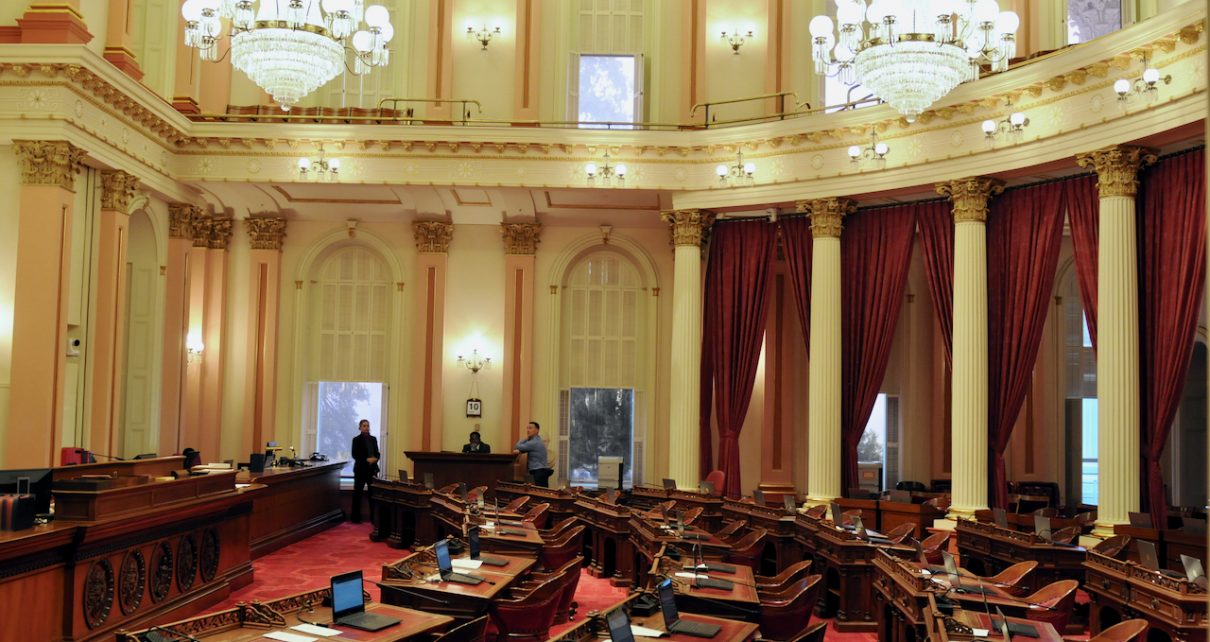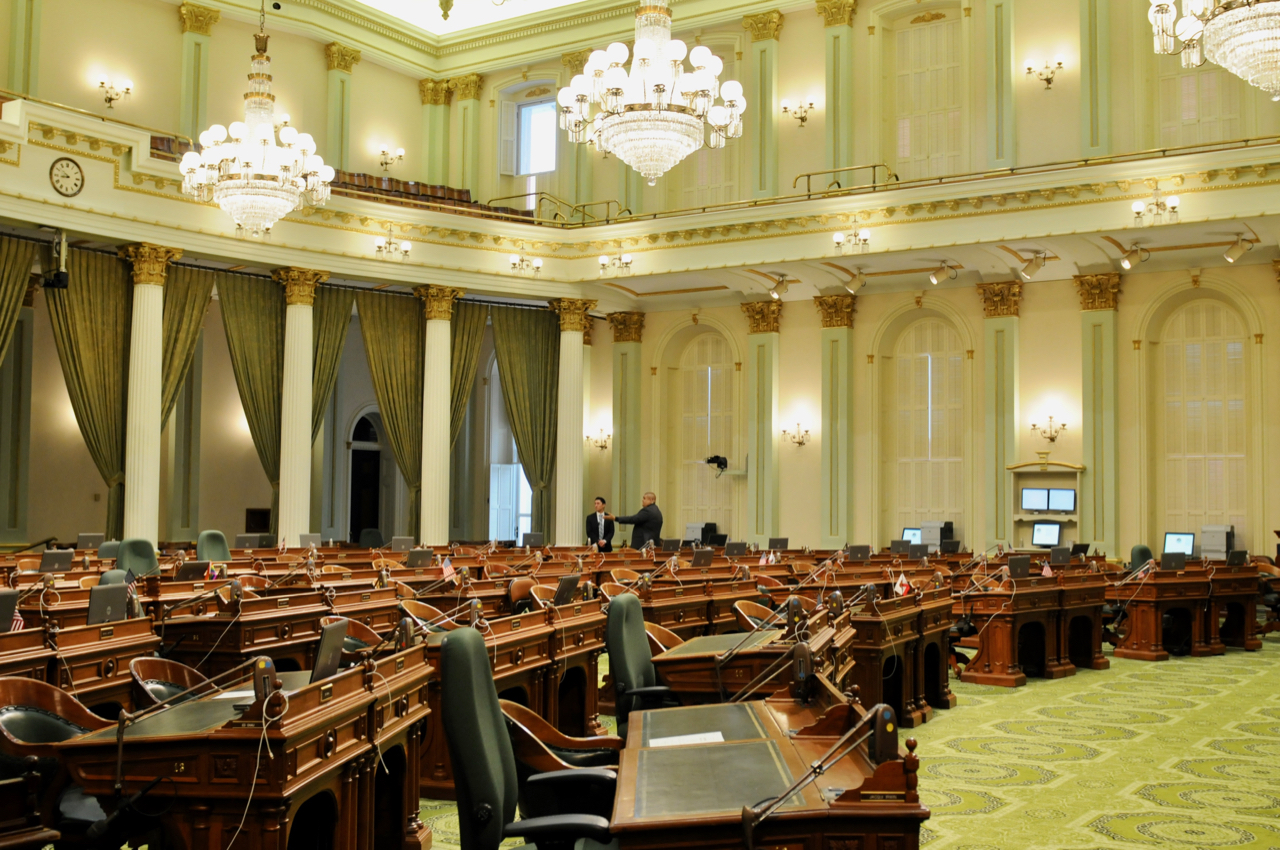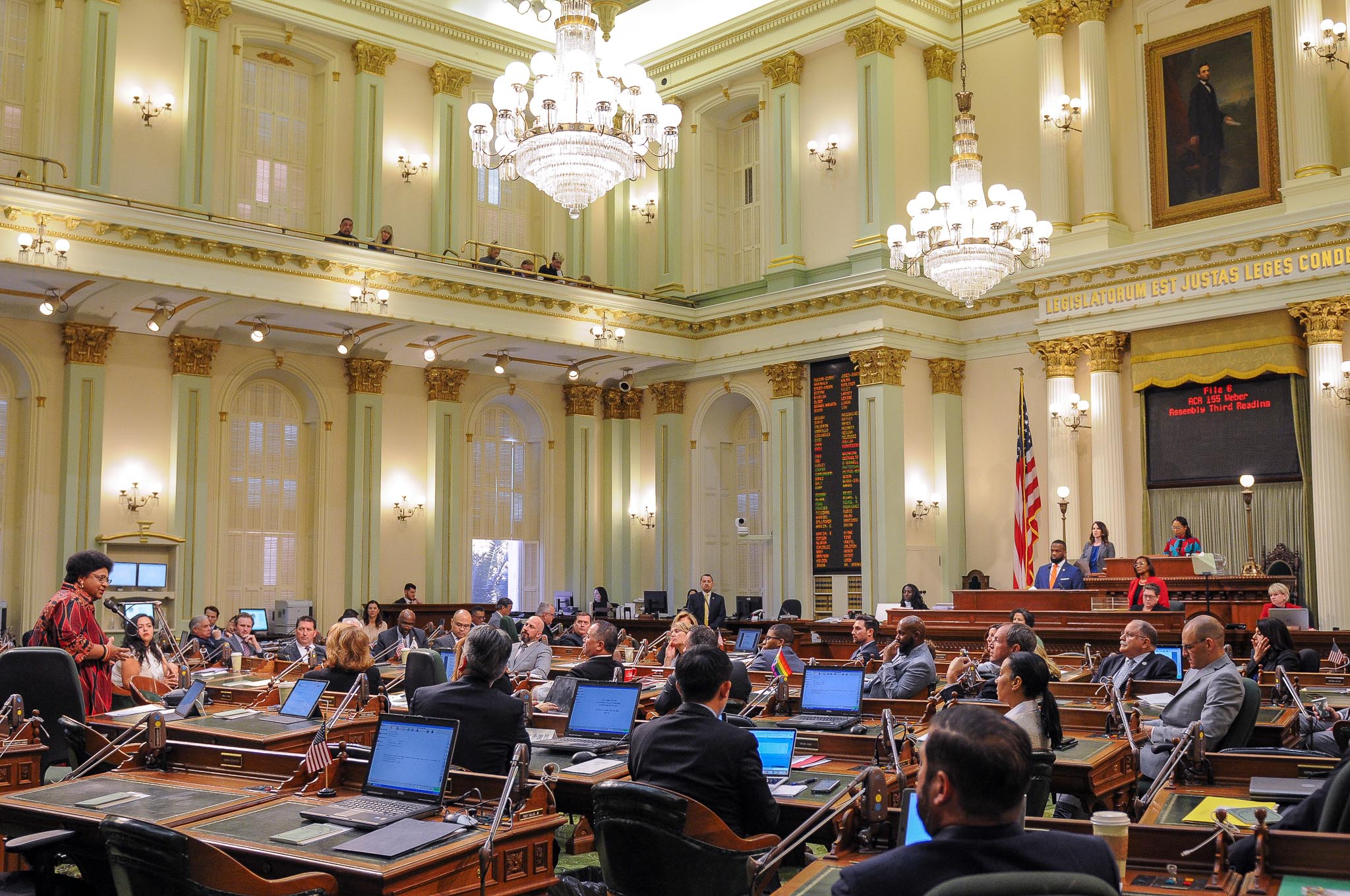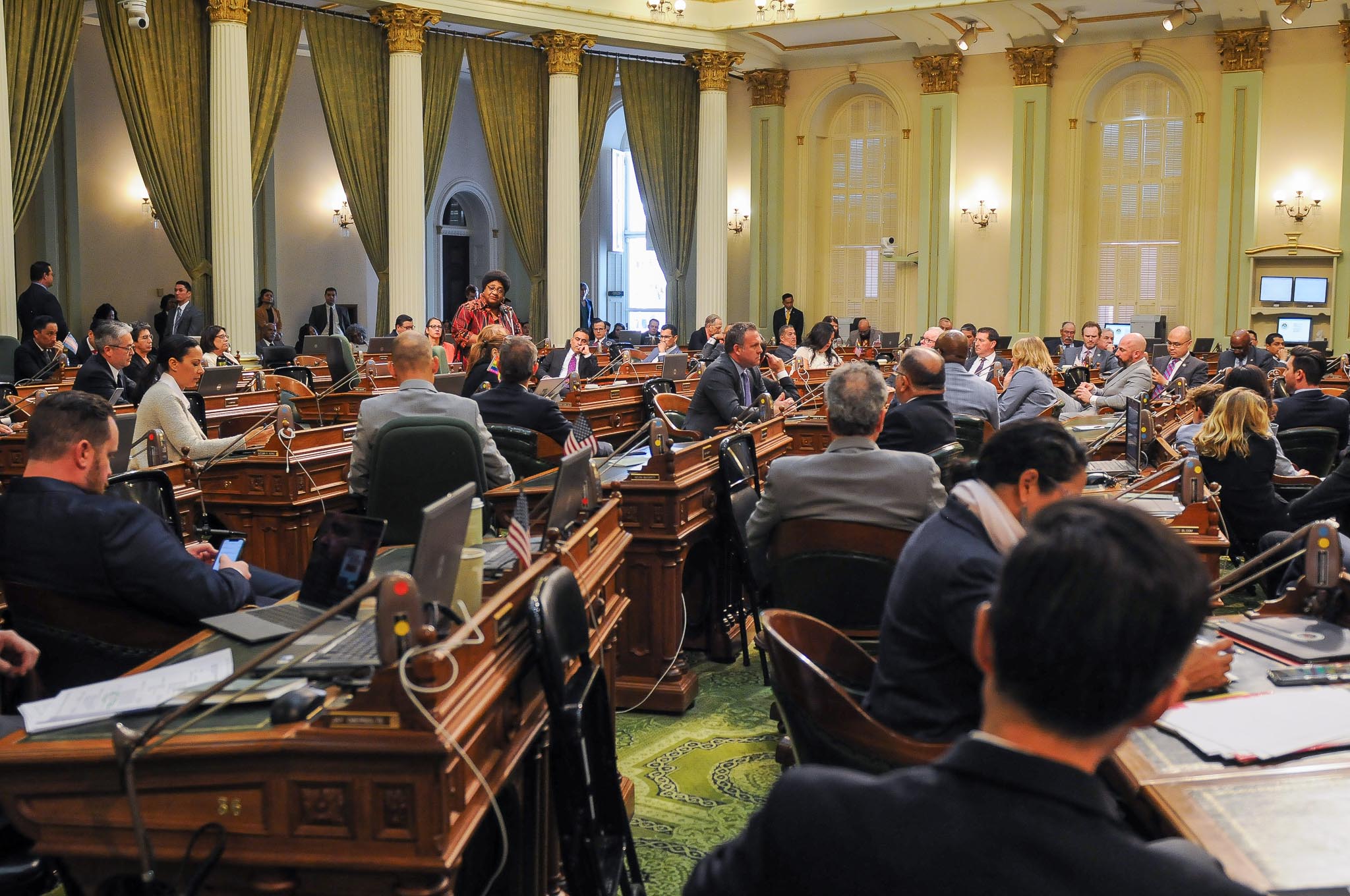
California Senate Chambers. (Photo: Kevin Sanders for California Globe)
How to Draft an Intent Bill
An intent bill is the second form of placeholder bill, but it is not a spot bill
By Chris Micheli, October 20, 2022 11:40 am
In the California Legislature, an “intent bill” is basically used as a placeholder for a future measure to be amended into the intent bill. Quite often bills introduced in the California Legislature without substantive language in them are called “spot bills.” However, that is not always the case even though both spot and intent bills act as placeholders with substantive amendments to be added at a later date.
Intent Bills provide a statement of intent by the Legislature. The Office of Legislative Counsel includes in its Digest a statement that reads: “This bill would state the intent of the Legislature to ___.” These intent statements can be general in nature or quite narrow in their descriptions.
Some intent bills allow broad leeway to the bill’s author about what might later be amended into the bill. For example, a reader might see a bill that provides, “It is the intent of the Legislature to enact a bill relating to transportation.” This is an example of a broad intent bill.
In other instances, a narrow statement will clearly provide what the bill will ultimately do when substantive amendments are substituted into the bill. For example, a reader might see a bill that provides, “It is the intent of the Legislature to conform state tax law to federal tax law modifications made to the research and development tax credit enacted by the 2019 federal tax act.” This is an example of a narrow intent bill, with clear understanding of what the ultimate bill language will provide.
The following is an example of a recent intent bill during the 2022 California Legislative Session. The Legislative Counsel’s Digest was the following:
AB 1141, as introduced, Frazier. Wildfires: Wildland Urban Interface Fire Research Center.
Existing law establishes various programs for the prevention, detection, and mitigation of wildfires.
This bill would express the intent of the Legislature to enact subsequent legislation that would develop and fund a Wildland Urban Interface Fire Research Center that specifically addresses the wildland urban interface fire problem and needs of wildfire prevention, detection, and mitigation planning, building, and response, and related economic, insurance, and modeling practices in the state.
Like its spot bill counterpart, the existing law section of the Digest is a broad statement. Thereafter, either a broad or narrow intent statement is provided in the “this bill would” section of the Digest. The language from the bill will usually be substituted in full in the Digest.
For the above bill, the following is the intent statement contained in the body of the bill:
SECTION 1.
It is the intent of the Legislature to enact subsequent legislation that would develop and fund a Wildland Urban Interface (WUI) Fire Research Center that specifically addresses the wildland urban interface fire problem and needs of wildfire prevention, detection, and mitigation planning, building, and response, and related economic, insurance, and modeling practices in the state. It is the intent of the Legislature that the WUI Fire Research Center would act as a think-tank where fire personnel could discuss policy, exchange information, and train personnel in best practices.
An intent bill is the second form of placeholder bill, but it is not a spot bill. It does not make a nonsubstantive change in the law; instead, it makes a statement of legislative intent.
- Legislative Policy on Bay Area Pilotage - July 26, 2025
- Small Craft Harbors and Waterways in California - July 25, 2025
- Disability of Parties in Civil Actions - July 24, 2025







